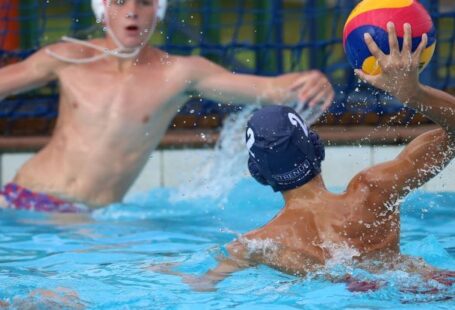In the realm of injury recovery, athletes and fitness enthusiasts are constantly seeking alternative forms of exercise to maintain their fitness levels while allowing their bodies to heal. One such method that has gained popularity is pool running. This low-impact exercise involves running in water, providing individuals with a challenging workout without the stress on joints typically associated with running on solid ground. But can pool running truly benefit injury recovery? Let’s delve into the advantages and considerations of this unique form of exercise.
**The Science Behind Pool Running**
Pool running, also known as aqua jogging, involves mimicking the running motion in the water while wearing a floatation belt to maintain buoyancy. The resistance of the water adds an extra challenge to the workout, engaging muscles in a different way compared to traditional running. This form of exercise is particularly beneficial for those recovering from injuries such as stress fractures, muscle strains, or joint issues, as it reduces the impact on the body while still providing a cardiovascular workout.
**Low-Impact Nature**
One of the primary benefits of pool running for injury recovery is its low-impact nature. Running on hard surfaces can place significant stress on the joints, especially the knees and ankles. By transitioning to pool running, individuals can continue to work on their cardiovascular fitness without exacerbating their injuries. The buoyancy of the water also helps support the body, reducing the risk of further damage while allowing for a full range of motion.
**Maintaining Cardiovascular Fitness**
When recovering from an injury that limits high-impact activities, such as running or jumping, it can be challenging to maintain cardiovascular fitness. Pool running offers a solution by providing a rigorous workout that elevates the heart rate without straining the joints. This can help individuals stay in shape during their recovery period, allowing them to return to their regular exercise routine more quickly once they are fully healed.
**Muscle Strengthening and Rehabilitation**
In addition to cardiovascular benefits, pool running can also aid in muscle strengthening and rehabilitation. The resistance provided by the water forces muscles to work harder, helping to build strength and endurance. This can be particularly beneficial for individuals recovering from muscle injuries or surgeries, as it allows them to gradually rebuild their strength without putting undue stress on the affected area.
**Considerations and Precautions**
While pool running can be a valuable tool for injury recovery, there are some considerations and precautions to keep in mind. It is essential to maintain proper form while performing this exercise to avoid straining muscles or exacerbating existing injuries. Additionally, individuals should start slowly and gradually increase the intensity of their workouts to prevent overexertion.
**Incorporating Pool Running into Your Recovery Plan**
If you are considering incorporating pool running into your injury recovery plan, it is essential to consult with a healthcare provider or physical therapist to ensure that it is appropriate for your specific condition. They can provide guidance on how to safely integrate pool running into your routine and offer tips for maximizing its benefits.
**Final Thoughts**
Pool running can be a valuable tool for individuals looking to maintain their fitness levels while recovering from injuries. Its low-impact nature, cardiovascular benefits, and muscle-strengthening potential make it a versatile exercise option for a wide range of conditions. By understanding the science behind pool running and taking the necessary precautions, individuals can effectively leverage this form of exercise to support their recovery journey and return to their active lifestyles.





